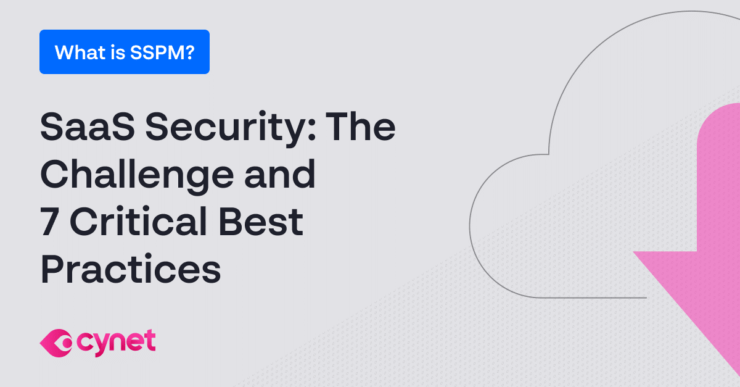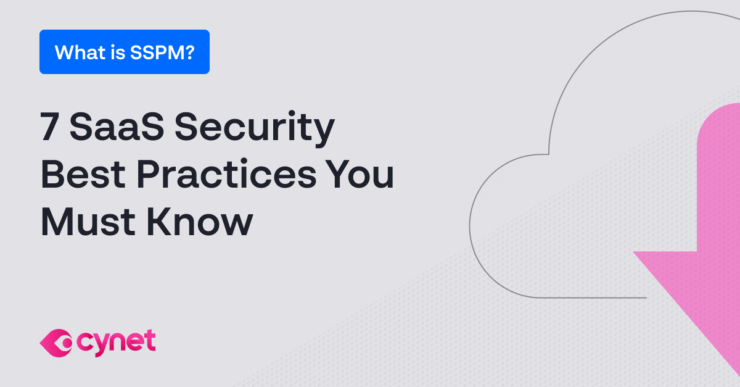April 13, 2022
Last Updated:
February 28, 2025
Cloud native applications are increasingly adopted by organizations looking to get the most out of the cloud, including agility, cost savings, and performance. However, the cloud introduced new risks, including misconfiguration and vulnerabilities that can expose applications to cyber attacks.
Cloud providers use a shared responsibility model, in which the cloud provider protects infrastructure, while cloud customers are responsible for protecting workloads, users, applications, and data. Cloud security posture management (CSPM) solutions can help organizations do their part of the shared responsibility equation. CSPM can help detect misconfigurations and vulnerabilities, and remediate them to prevent exposure to attack.
In practical terms, CSPM enables organizations to uncover security issues and policy violations, fix and patch cloud services before cyberattacks occur. It can be used for applications running in any cloud deployment model—Infrastructure as a Service (IaaS), Platform as a Service (PaaS), and Software as a Service (SaaS). Note that a specialized security solution has evolved for SaaS applications, known as SaaS security posture management (SSPM).
Why Is CSPM Important?
CSPM platforms provide the visibility needed to monitor cloud environments that are constantly changing. It helps identify gaps between your actual security posture and stated security policies. CSPM platforms aim to reduce the amount and scope of cloud security incidents occurring due to misconfigurations.
A CSPM platform can help you monitor policy violations across multiple cloud environments. You can use prebuilt compliance libraries listing common best practices and standards, such as PCI DSS, HIPAA, NIST 800-53, SOC 2, and CIS Foundations Benchmarks. Some CSPM platforms also offer automated capabilities for remediating misconfigurations.
Here are common policy violations CSPM platforms typically address:
- Lack of encryption—CSPM platforms can identify data storage, databases, and application traffic not protected by encryption. Monitoring this violation can help ensure sensitive data remains protected.
- Improper encryption key management—CSPM platforms can help ensure your encryption keys are properly managed. For example, the platform can let you know if the system is not rotating keys regularly.
- Permissions violations—you can define thresholds for permissions, and the CSPM platform can alert you when it detects accounts with too many permissions.
- Authentication—you can define which critical system accounts require multi-factor authentication, and the CSPM platform will alert you if any of these systems operate without this mechanism.
- Misconfigured network connectivity—CSPM platforms can alert you when a network connectivity component is misconfigured. For example, it can identify resources accessible directly from the Internet or data stores exposed directly to the public Internet.
You can leverage these CSPM capabilities to identify and remediate cloud risks during development phases as well as for production environments.
Some of the more severe security issues in cloud environments are found in SaaS applications. Read more in our guide to SaaS security
How Does CSPM Work?
Each CSPM solution implements a different process. However, the majority include the following basic steps:
1. Discovery and Visibility
The first step in CSPM is identifying and cataloging all cloud resources, including compute instances, databases, storage, and identity configurations. CSPM tools use APIs and native integrations to continuously scan cloud environments and maintain an up-to-date inventory.
Real-time mapping ensures that new resources are automatically detected and added to the security assessment. By providing a complete view of the cloud environment, CSPM solutions help security teams identify misconfigurations, open ports, or unused services that could introduce risks.
2. Risk Assessment and Prioritization
Once assets are discovered, CSPM tools assess their security posture by comparing configurations against established security policies and best practices. Instead of treating all misconfigurations equally, modern CSPM platforms evaluate risk based on several factors:
- Exposure – Is the resource publicly accessible?
- Sensitivity – Does it contain sensitive data or critical workloads?
- Potential impact – What are the consequences of a security breach?
Risks are then prioritized, helping security teams focus on the most critical vulnerabilities first. For example, an unencrypted public-facing storage bucket would be flagged as a high-priority issue due to its exposure and data sensitivity.
3. Remediation
After identifying risks, CSPM solutions provide recommendations for mitigation, such as tightening identity permissions, closing open ports, or enabling encryption. Many platforms also support automated remediation, allowing security teams to resolve common misconfigurations without manual intervention.
CSPM tools can integrate with DevOps workflows, enabling security checks before deployment. Misconfigured infrastructure-as-code (IaC) templates can be flagged and corrected before being pushed to production, reducing security risks in the development pipeline.
4. Compliance and Reporting
CSPM solutions help organizations maintain compliance with frameworks like PCI DSS, HIPAA, GDPR, and CIS Benchmarks by continuously evaluating cloud configurations. Security teams can define custom compliance policies and receive automated reports highlighting non-compliant areas.
Many CSPM tools also maintain an audit trail, documenting security changes and remediation actions. This helps organizations track security improvements, demonstrate compliance, and investigate incidents when needed.
5. Continuous Monitoring
CSPM platforms provide real-time monitoring to detect newly introduced vulnerabilities, unauthorized changes, or deviations from security baselines. They send real-time alerts to security teams, ensuring that misconfigurations or threats are addressed promptly.
6. Integration with the Broader Security Stack
CSPM tools often integrate with cloud-native application protection platforms (CNAPP) and other security solutions, such as workload protection, identity management, and SIEM systems. These integrations enable automated detection and response, providing a unified approach to cloud security.
What Are the Benefits of CSPM?
CSPM offers organizations several key benefits, helping them secure their cloud environments, improve compliance, and enhance overall security operations. Below are the main advantages CSPM solutions provide:
- Proactive risk identification: CSPM tools continuously scan cloud environments to identify misconfigurations, vulnerabilities, and policy violations before they can be exploited. This proactive approach helps prevent security breaches and reduces the likelihood of costly incidents.
- Improved compliance: By aligning cloud configurations with industry standards and regulatory frameworks such as PCI DSS, HIPAA, SOC 2, and CIS Benchmarks, CSPM simplifies the process of maintaining compliance. Many platforms provide prebuilt compliance rules and detailed audit reports to streamline compliance efforts.
- Increased visibility: CSPM platforms deliver comprehensive insights into cloud assets, configurations, and security posture across multi-cloud environments. This visibility ensures security teams can monitor dynamic cloud resources effectively and address blind spots.
- Automated remediation: Many CSPM solutions offer automation features to resolve common misconfigurations. These capabilities save time for security teams, reduce human error, and help organizations respond faster to security issues.
- Consistent policy enforcement: CSPM ensures security policies are consistently applied across various cloud services and accounts. It alerts organizations to deviations from defined policies, reducing the risk of mismanagement in complex environments.
- Support for DevSecOps: CSPM integrates well into DevSecOps workflows, allowing teams to identify and remediate security risks during development. This early intervention reduces vulnerabilities in production environments and promotes secure application deployment.
In my experience, here are tips that can help you better utilize Cloud Security Posture Management (CSPM):
- Integration with CI/CD Pipelines: Incorporating CSPM into your CI/CD pipelines ensures that security issues are caught early in the development process, preventing misconfigurations from reaching production.
- Prioritization of High-Impact Misconfigurations: Focusing on the most critical misconfigurations, such as public-facing storage buckets or exposed credentials, allows your security team to address the most significant risks first.
- Automation of Remediation: Leveraging automation capabilities can help streamline the remediation process for common misconfigurations, freeing up your security team for more complex tasks.
- Mapping to Compliance Standards: Aligning CSPM misconfiguration alerts with compliance frameworks ensures that your cloud environment is both secure and compliant, reducing audit risks.
- Behavioral Baselining for Anomaly Detection: Using machine learning to establish a baseline for normal behavior in your cloud environment enables you to detect deviations that might indicate security incidents or misconfigurations.
Eyal Gruner is the Co-Founder and Board Director at Cynet. He served as the company’s CEO for nine years, guiding its growth from the very beginning. He is also Co-Founder and former CEO of BugSec, Israel’s leading cyber consultancy, and Versafe, acquired by F5 Networks. Gruner began his career at age 15 by hacking into his bank’s ATM to show the weakness of their security and has been recognized in Google’s security Hall of Fame.
CSPM vs. Other Security Solutions
CSPM vs. CASB
Cloud Access Security Broker (CASB) solutions focus on securing access to cloud applications and enforcing data-centric policies. While CSPM ensures cloud environments are correctly configured and secure, CASB protects data in motion between users and cloud services, and monitors user activity.
Key differences:
- Focus: CSPM targets infrastructure misconfigurations and compliance, while CASB focuses on data security, access control, and user behavior monitoring.
- Scope: CASB works primarily at the application level (e.g., SaaS services), whereas CSPM operates across all cloud layers, including IaaS and PaaS.
- Features: CASB enforces policies like data loss prevention (DLP) and provides visibility into shadow IT, which CSPM does not.
CSPM vs. CWPP
Cloud Workload Protection Platforms (CWPPs) secure workloads such as virtual machines, containers, and serverless functions within the cloud. CSPM, on the other hand, is concerned with the overall security posture and configuration of the cloud infrastructure.
Key differences:
- Focus: CSPM addresses misconfigurations and compliance in the cloud infrastructure, while CWPP protects workloads from runtime threats like malware or vulnerabilities.
- Features: CWPP includes workload runtime monitoring, threat detection, and vulnerability management; CSPM emphasizes policy enforcement and configuration security.
- Integration: Both solutions are complementary, as CSPM ensures secure infrastructure, and CWPP focuses on securing the workloads hosted within it.
CSPM vs. CIEM
Cloud Infrastructure Entitlement Management (CIEM) focuses on managing and securing identity and access management (IAM) roles and permissions in the cloud. CSPM ensures cloud configurations are secure but does not specialize in granular access control.
Key differences:
- Focus: CIEM manages and monitors permissions to prevent excessive or unused access rights. CSPM focuses on the security and compliance of cloud configurations.
- Features: CIEM includes automated permission reviews and recommendations for least privilege access. CSPM identifies a broader range of risks, such as lack of encryption or misconfigured networking.
- Use Case: CIEM is ideal for addressing risks associated with identity-related attacks, while CSPM handles misconfigurations and policy violations at the infrastructure level.
CSPM vs. CNAPP
Cloud Native Application Protection Platforms (CNAPPs) are comprehensive solutions that integrate capabilities of CSPM, CWPP, CIEM, and more into a unified platform. CSPM is a core component of CNAPP but is narrower in scope.
Key differences:
- Focus: CSPM handles cloud infrastructure configuration, while CNAPP covers the full lifecycle of application and workload security in the cloud.
- Features: CNAPP combines features like workload protection, IAM management, and configuration scanning to provide end-to-end security. CSPM focuses solely on configuration security and compliance.
- Scope: CNAPP is broader, suitable for organizations seeking a unified approach to cloud security. CSPM is ideal for organizations focusing primarily on configuration security and compliance.
12 Considerations for Evaluating CSPM Vendors
Most cloud providers offer compliance management and threat detection tools and services that only work with vendor-specific infrastructure. These offerings are less useful for hybrid or multi-cloud infrastructure because they cannot provide the end-to-end control and visibility you need to manage your overall cloud security posture.
For this reason, you should use a CSPM platform that integrates well with your cloud native tools and aggregates the outputs from different products in a centralized, single source of truth for assessing your security posture.
When selecting a cloud security posture management tool, evaluate the vendors based on whether they provide the following capabilities:
- Granular, real-time visibility—view all the information about your infrastructure and assets collected in real time, aggregated from different monitoring streams, and displayed via a centralized platform. This information provides audit trail and data flow insights.
- Remediation capabilities—providing guidance and best practices about configuration errors directly within the CSPM application, preferably enabling one click remediation.
- Context-based visualizations—view enriched information about all the resources connected to the network, covering their context and the relationships between them and automatically classifying high-risk resources. Visually track user actions and traffic flows to maintain situation awareness and enable more effective detection, investigation, and reparation of misconfigurations.
- Continuous asset discovery—automate the real-time discovery of assets across all environments, providing visibility into high-risk assets that process or store sensitive data.
- IaC impact evaluation—assess how infrastructure-as-code repositories affect your security posture to prevent deployed instances propagating IaC template vulnerabilities.
- Compliance support—ensure up-to-date support for various regulatory frameworks like GDPR, HIPAA, SOX, and PCI. Implement CIS controls and benchmarks to maintain compliance.
- Continuous compliance—incorporate compliance into the highly iterative CI/CD pipeline to keep up with your fast timelines and the elastic infrastructure of your public cloud products.
- Frequent, comprehensive scanning—manage your cloud native security posture with near real-time scanning of all assets across different environments.
- Real-time security alerts—proactively protect your network with detected breach and policy violation alerts. Timely alerts are crucial for preventing and mitigating threats and enabling the automatic remediation of misconfiguration issues.
- Flexibility—adjust the CSPM according to your organization’s specific needs or integrate with your existing architectures, processes, and policies. Create rules easily using simple, expressive code.
- Dynamic governance interpretation—translate policy requirements into simple, easily executed rules that you can automate consistently throughout your infrastructure while minimizing errors.
- Audit preparedness—ensure you are always ready for an audit with customizable, easy-to-understand reports.
Cynet SaaS Security Posture Management (SSPM)
SSPM ensures that SaaS applications are properly configured to protect them from compromise. Cynet provides a leading SSPM solution that continuously monitors SaaS applications to identify gaps between stated security policies and actual security posture, letting you automatically find and fix security risks in SaaS assets, and automatically prioritize risks and misconfigurations by severity.
Cynet SSPM provides:
- Automatic discovery and tracking of SaaS risks – tracks security posture across all SaaS platforms, prioritized by risk category, tracked over time directly from the Cynet dashboard.
- Automatic analysis and fix in one click – drills down to provide details and insights about every identified risk, recommends remediation actions, and applies them automatically.
- Compliance support—automatically compares configuration settings with regulatory frameworks like GDPR, HIPAA, SOX, and PCI and provides the specific settings recommended for each framework.
Contact us to learn more about Cynet SSPM



